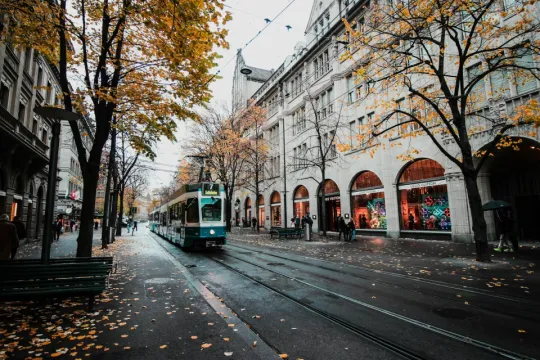The population of Ireland: history, demographics and future trends

Ireland is a country with a rich and complex demographic history. From the Great Famine to the current wave of immigration, Ireland's population structure has undergone significant changes over the centuries. Thanks to stable population growth in recent years, Ireland now has one of the youngest populations in Europe and a constantly developing economy.
In this article, we examine the evolution of Ireland's population, its major cities, migration trends, and future forecasts.
- History of the population of Ireland
From the Middle Ages to the present day, Ireland has experienced a demographic development marked by important historical events.
1.1. Population growth until the 19th century
Before the 19th century, Ireland's population had grown steadily. In the Middle Ages and early modern times, the island's population was predominantly rural, engaged in agriculture and livestock farming. In the 18th century, thanks to advances in agricultural production, the population experienced significant growth, reaching 8.1 million inhabitants in 1841 .
1.2. The Great Famine and Mass Emigration
One of the most tragic events in Irish history was the Great Famine (1845–1852) , caused by a potato rust epidemic, the staple food of the population. This catastrophe claimed the lives of over a million people and forced two million more to emigrate. As a result, the Irish population began to decline dramatically .
1.3. 20th Century: A Slow Recovery
Throughout the 20th century, the Irish population remained small due to mass emigration, primarily to countries such as the United States, Canada, Australia, and the United Kingdom. It wasn't until the 1970s and 1980s that the population began to stabilize and slowly grow.
1.4. 21st Century: Growth and Diversification
Since 2000, Ireland has experienced significant population growth due to economic growth and immigration. The country currently has one of the highest birth rates in Europe, and more and more immigrants are choosing Ireland as their new home.
- Current demographics of Ireland
According to the 2022 Irish census, the current population of the country is approximately 5.2 million .
2.1. Distribution by age and gender
- Young population : Ireland has one of the youngest populations in Europe. More than 30% of the population is under 25 years old .
- Life expectancy : Life expectancy has increased significantly and currently averages 82 years .
- Birth rate : Although it has decreased in recent years, it remains one of the highest in the European Union, with an average of 1.8 children per woman .
2.2. The most important cities in Ireland
Although much of the country is rural, there are several densely populated cities.
Dublin (Dublin) - The capital
- Population : More than 1.4 million inhabitants in the metropolitan area.
- Importance : Economic, technological and cultural center of Ireland.
cork
- Population : Approximately 220,000 inhabitants .
- Importance : Very important commercial port and important university center.
comic limerick
- Population : Approximately 100,000 inhabitants .
- Meaning : City with strong industry and economic growth.
Galway
- Population : About 80,000 inhabitants .
- Importance : Known for its vibrant culture and large student community.
- Immigration and emigration in Ireland
3.1. Irish emigration throughout history
Ireland has always been a country of emigration. For centuries, millions of Irish people left the island in search of better opportunities in North America, Great Britain, and Australia.
3.2. Immigration in the 21st Century
Since the early 2000s, Ireland has welcomed a large number of immigrants thanks to its economic growth. Currently, more than 12% of the population is foreign-born , with significant communities of:
- polished
- British
- Brazilian
- Romanians
- Indians
This phenomenon has transformed Ireland into a multicultural country with great ethnic diversity.
- Future trends in the Irish population
Experts predict that Ireland's population will continue to grow in the coming decades due to several factors :
- High birth rate compared to other European countries.
- Positive migratory flow , since more people enter the country than leave.
- Increasing life expectancy will lead to an increase in the number of elderly people.
By 2050, Ireland's population is expected to exceed 6 million , reaching a level similar to that recorded before the Great Famine.
However, this growth also brings with it challenges, such as:
- Increased demand for housing and public services .
- In cities like Dublin the cost of living is rising .
- Need for measures for the aging population .
- Diploma
The Irish population has undergone a fascinating development over the centuries. From the devastating effects of the Great Famine to the current economic growth driven by immigration, Ireland is a country in constant change.
With a young population, a booming economy, and growing cultural diversity, Ireland has a promising demographic future. However, the country also faces challenges such as access to housing, managing public services, and integrating new communities.
Ireland will remain an attractive place to live, work, and study in the coming years, consolidating its position as one of Europe's most dynamic nations.